The Rise and Ruin of Brian Jones
A deep dive into the turbulent life and mysterious death of The Rolling Stones’ controversial founder
By 1969, The Rolling Stones had become a global phenomenon, catapulting five ordinary young men from Southern England to unimaginable heights of fame. Their meteoric rise brought them immense wealth and notoriety, rivaled only by their more polished and family-friendly counterparts, The Beatles. Amid the glittering success and hedonism of the 1960s rock and roll scene, the stage was set for the lifestyle to claim one of its earliest and more often overlooked casualties, Brian Jones.
Brian Jones was born Lewis Brian Hopkin Jones on the 28th of February 1942 in Cheltenham, Gloucestershire. His father, an aeronautical engineer, was a strict and domineering man while his mother, who played the organ at the local baptist church, was equally rigid and bound by the uncompromising societal expectations of middle class post-war England. Jones, seemingly on track to fulfill his parents’ expectations, scored near perfect grades in his 11 Plus exams, which granted him entry into a grammar school. Here, he continued to excel academically but was badly behaved, beginning to exhibit the traits that would lead his future band mate Mick Jagger to describe him as “a very difficult person with something very disturbed about him”. From early on, Brian’s disruptive behavior was speculated to be a symptom of his stifling upbringing, with a school report stating that he “suffers from a domineering father and has to show off to compensate”.
In spite of his behavioral issues, Brian was a talented musician. He played the clarinet in his school’s orchestra and later took up the saxophone. Ever the rebel, he developed an affinity for rhythm and blues, a genre which by the late 1950s and early 1960s had replaced rock and roll as the genre most stigmatized for its ties to African American culture. Though a skilled piano player himself, Brian’s father expressed severe disapproval at his son’s non conformist musical tastes. This did nothing to quell Brian’s passion and by age 17 he had acquired an acoustic guitar and begun to play in clubs around town.
It was around this age that the consequences of Brian’s rash behavior would begin to spin out of control. He impregnated a 14 year old girl in 1958 and soon after, a married woman from Guilford. By age 22, Brian Jones had fathered at least five children. He was kicked out of Cheltenham Art College and consequently, out of his parents’ home. Seemingly unaffected, Brian lived a bohemian lifestyle, working odd jobs and staying with girlfriends before moving to London in 1962, changing the trajectory of not only his life but also of rock music as we know it.
Far from the constraints of prim and uptight middle class Cheltenham, Brian Jones dove headfirst into the thriving London rhythm and blues scene. By the spring of 1962, he had found his footing in London working as an appliance salesman and playing with various Blues bands. In search of a more permanent arrangement, he put out an ad in Jazz News on the 2nd of May welcoming auditions for his new RnB group. Responses began to trickle in, marking the inception of The Rolling Stones. By 1963 Brian had assembled the legendary line up that would redefine the sound of a generation: Mick Jagger, Keith Richards, Charlie Watts, Bill Wyman and of course, himself.
In the early days of The Rolling Stones’ existence, Brian Jones was unrivaled as leader. He was, after all, the architect behind the band’s formation and iconic name. On Brian’s initial role, bassist Bill Wyman would go on to say,
“Early on, he even signed the management and recording contracts, and, as the most popular member of the band with girls, he received 75% of all Stones fan mail in those early years.”
Mick Jagger’s girlfriend at the time, Linda Lawrence, would also detail his early admiration for Brian, saying,
“Mick was in awe of Brian. He absolutely loved him. He wanted to be Brian, because Brian had all the girls and all the fan mail.”
As The Rolling Stones began to slowly but surely amass a cult following and grow into their role as The Beatles’ darker counterparts under the new management of Dutchman Andrew Loog Oldham, the internal dynamics began to shift. Mick Jagger, who had previously been a student at the prestigious London School of Economics, formally dropped out to focus on his role in the band. Brian Jones on the other hand, was proving unsuitable for a career in show business. Brian was flaky, often missing rehearsals and collapsing from nervous exhaustion. It quickly became obvious that he lacked the temperament and stamina to tour and play long hours. All The Stones experimented with drugs and alcohol, but this had a particularly negative effect on Brian, who lacked the mental and physical fortitude to keep up with his heavy consumption.
Oldham also began to insist that in order to keep up with the evolving music scene, it was paramount that The Stones follow The Beatles’ example and begin to write their own songs rather than covering old Blues classics. This was at Brian Jones’ detriment, as he had no desire to stray from playing the classic blues he loved, and had, according to Mick Jagger, no talent for songwriting. Mick Jagger and Keith Richards, who had up until that point lived with Brian in his London apartment, moved in with Andrew Oldham, further alienating Brian.
Already feeling ousted, Brian began to make desperate attempts to regain his status by alternating between sucking up to Jagger and Oldham. By all accounts, Brian was torn between resenting Jagger and Richards for their increasing fame and an obnoxious desperation to approximate himself to them. On Brian’s behavior, Bill Wyman said,
"There were at least two sides to Brian's personality. One Brian was introverted, shy, sensitive and deep-thinking. The other was a preening peacock, gregarious, artistic, desperately needing assurance from his peers”
By 1965, Brian Jones began a downward spiral. His already heavy consumption of drugs and alcohol worsened and he retreated into his Chelsea cottage, where he lived with a rotation of girlfriends who he subjected to horrific domestic abuse on drunken whims. According to his biographer John Trynka, Jones was already considering his departure from the band at this point but as fate would have it, his passion would soon be momentarily revived.
In 1966 Brian met the gorgeous, larger than life Anita Pallenberg. Far from just a pretty face, Anita was an insanely glamorous and outlandish character. Born into an extremely wealthy German family, she was well-traveled and spoke four languages. She gained notoriety as a model and was soon introduced to Brian Jones during an assignment in Munich. Brian had finally met his match in the fiery, confident Anita Pallenberg. They quickly became inseparable, with Pallenberg having a massive influence over Brian’s increasingly androgynous style. Sporting identical blonde bowl cuts, they emerged as one of the era’s most iconic couples, nearly eclipsing even Mick Jagger and Marianne Faithfull.
Unfortunately, their blissful union was short lived as their matching short fuses quickly turned violent. They endlessly provoked each other, with Brian often inflicting serious physical damage on Anita during the regular assaults. The chaos reached its peak when the couple invited Keith Richards to join them on a trip to Morocco. In true sixties fashion, the trio drove from England to France, intending to later cross over to Morocco. After Brian fell ill in Toulouse, Richards and Pallenberg went on to Morocco without him and by the time he was well enough to join them, had already began an affair. The pair made little effort to hide this, and Brian became incensed upon the discovery. He beat Anita so brutally and shamelessly that she immediately left Morocco with Keith Richards, signaling the end of her relationship with Jones. Keith Richards called this moment “the final nail in the coffin” of his already fragile friendship with Jones. He added,
“I knew he would never forgive me and I don’t blame him.”
The collapse of his relationship with Anita Pallenberg, who is often credited as the only woman Brian ever loved, served as a turning point in his short life. He grew increasingly dejected and morose, foreshadowing the decline that would soon follow.
By 1967, Brian’s constant drug and alcohol abuse began to produce legal consequences. A raid of his London flat on the 10th of May turned up marijuana, cocaine and methamphetamine. A year later on the 21st of May 1968, Brian was arrested for possession of marijuana while on probation from his prior drug offense. He narrowly escaped jail time, instead being fined a total of 155 pounds (3395 pounds today). These charges would later serve as an impediment to Brian attaining a US work visa for The Stones upcoming tour. His rehearsal attendance grew sparser as his addiction worsened. Only once threatened with dismissal would Brian show up, and even then, he was often too weak to play and sometimes completely wasted, prompting his band mates to turn off his amplifier. His final live appearance with The Rolling Stones was in December 1968 during The Rolling Stones Rock and Roll Circus. Brian was too drunk to play properly. On his performance, Mick Jagger said,
“He was just gone…and not in any condition to do anything. We had to baby him.”
In March 1969, Brian got The Rolling Stones’ car impounded for parking illegally during a London shopping trip. In May of the same year, he crashed his motorcycle into a shop window and was taken to hospital under an assumed name.
By June of 1969, it had become increasingly evident that Brian Jones could not continue as part of The Rolling Stones. It was clear that if allowed to continue, his behavior would have a negative effect on the band’s momentum. Brian had grown distant and apathetic as he watched The Rolling Stones stray further away from the rhythm and blues outfit he had initially created. For this reason, Jagger, Richards and Watts were met with no resistance when they visited Brian’s house in East Sussex on the 8th of June 1969 to inform him of his dismissal from the band. The next day, Brian would issue the following statement:
“I no longer see eye-to-eye with the others over the discs we are cutting. I want to play my kind of music, which is no longer the Stones’ music. The music Mick and Keith have been writing has progressed at a tangent, as far as my own taste is concerned.”
Brian was subsequently replaced by guitarist Mick Taylor. His departure from The Rolling Stones appeared to have alleviated some of his troubles, with Brian being described as “happier than he had ever been” in the weeks following his dismissal. He spent most of his time at his East Sussex farm house and seemed to be doing well, already working towards forming a new band and recording his own songs by 1969.
Unfortunately, this promising period would soon be cut short, when on July 3 1969, Brian was found lifeless at the bottom of his swimming pool after a night of drug and alcohol consumption with his girlfriend Anna Wohlin, her friend Janet Lawson and local handyman Frank Thorogood. The coroner’s report concluded that Brian had drowned while taking a swim to cool down from the summer heat. An autopsy revealed that his heart and liver were grossly enlarged from years of drug and alcohol abuse. Brian was only 27 at the time of his death, making him one of the earliest members of the infamous 27 Club.
Brian’s was a tragic but expected fate, given his very public battle with addiction. However, speculations of a possible murder quickly arose. It has been alleged that Frank Thorogood killed Jones over a dispute regarding payment for repairs he made to Brian’s home. Notable supporters of this theory include two of Brian’s known children, John and Barbara, and his last girlfriend Anna Wohlin. Brian’s body showed no signs of a struggle, but firm proponents of the murder theory believe this to be a result of shoddy police work. A little more than 2 weeks after Jones’ death, Joan Fitzsimons, a former girlfriend of Frank Thorogood, was attacked in her car after allegedly planning to reveal the true nature of Brian Jones’ death to national newspapers. The attack left her blind in both eyes, with a fractured skull and three missing front teeth. Police deny any link with Brian Jones’ death. It is further alleged that before his death in November 1993 Thorogood made a deathbed confession to Tom Keylock, a former driver for The Rolling Stones, who has since gone on to deny this claim. Keylock, who was one of the first to arrive at the scene on the night of Brian’s death, has also been implicated in theories surrounding the alleged murder.
Following his unexpected death, The Rolling Stones dedicated their July 5th 1969 Hyde Park concert, attended by up to 500,000 people, in memory of Brian Jones. Before they played their set, Mick Jagger paid tribute to Brian by reciting two stanzas of Percy Bysshe Shelley’s Adonais, comparing his death to that of poet John Keats. Hundreds of white butterflies were released into the crowd before the band played one of Jones’s favorites, Johnny Winter’s I’m Yours and I’m Hers.
Brian Jones was buried on July 10th 1969 in his hometown of Cheltenham. Bill Wyman and Charlie Watts were the only Stones in attendance. The Rolling Stones’ later remarks about Brian Jones have ranged from sympathetic to scathing. Keith Richards, who went on to have a thirteen year relationship and three children with Anita Pallenberg, would go on to say about Brian Jones,
“He enjoyed beating chicks up. Not a likeable guy. I honestly don’t think you’ll find anyone who liked Brian”
When asked if he felt guilty about Brian’s death, Mick Jagger told Rolling Stone magazine in 1995,
“No, I don't really. I do feel that I behaved in a very childish way, but we were very young, and in some ways, we picked on him. But, unfortunately, he made himself a target for it; he was very, very jealous, very difficult, very manipulative, and if you do that in this kind of a group of people, you get back as good as you give, to be honest. I wasn't understanding enough about his drug addiction. No one seemed to know much about drug addiction. Things like LSD were all new. No one knew the harm. People thought cocaine was good for you."
Brian Jones’ premature death immortalized him as a controversial figure, praised for creating one of the 1960s’ most iconic cultural forces while also leaving behind a legacy of turmoil and destruction. Though undeniably troubled and often violent, Brian Jones died a victim of the 60s rock and roll lifestyle, drawn into addiction and ultimately cast out. As Bill Wyman poignantly put it,
“While The Rolling Stones damaged all of us in some way, Brian was the only one that died.”



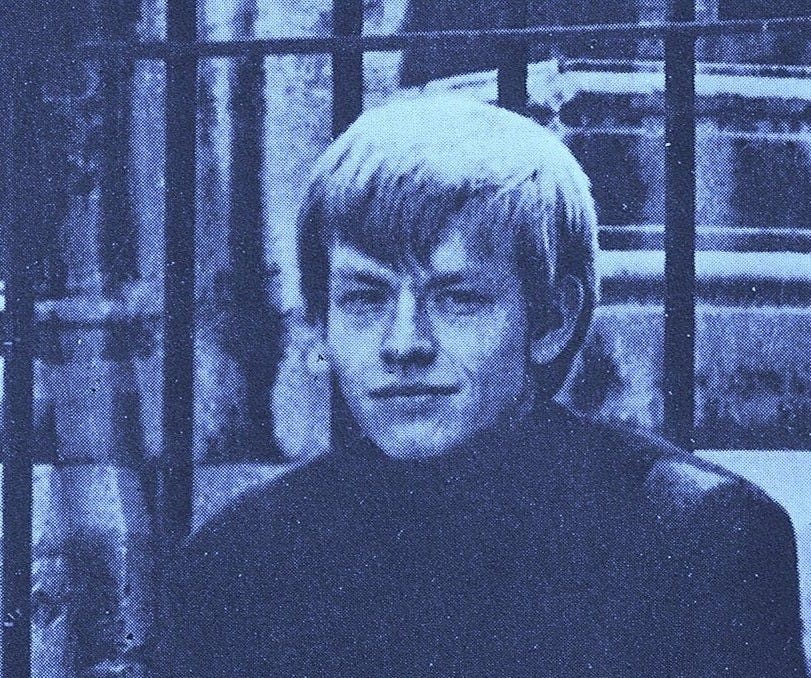
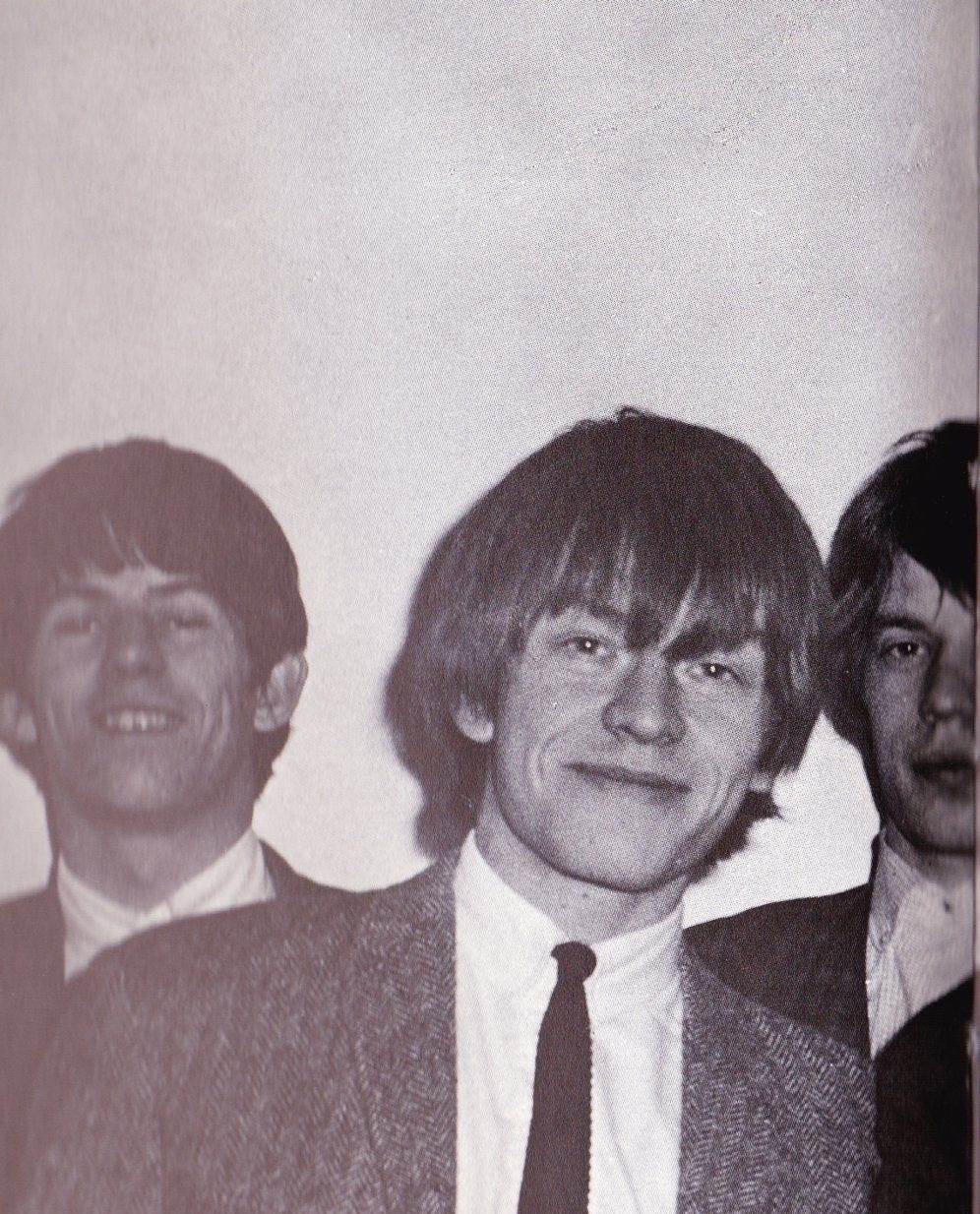
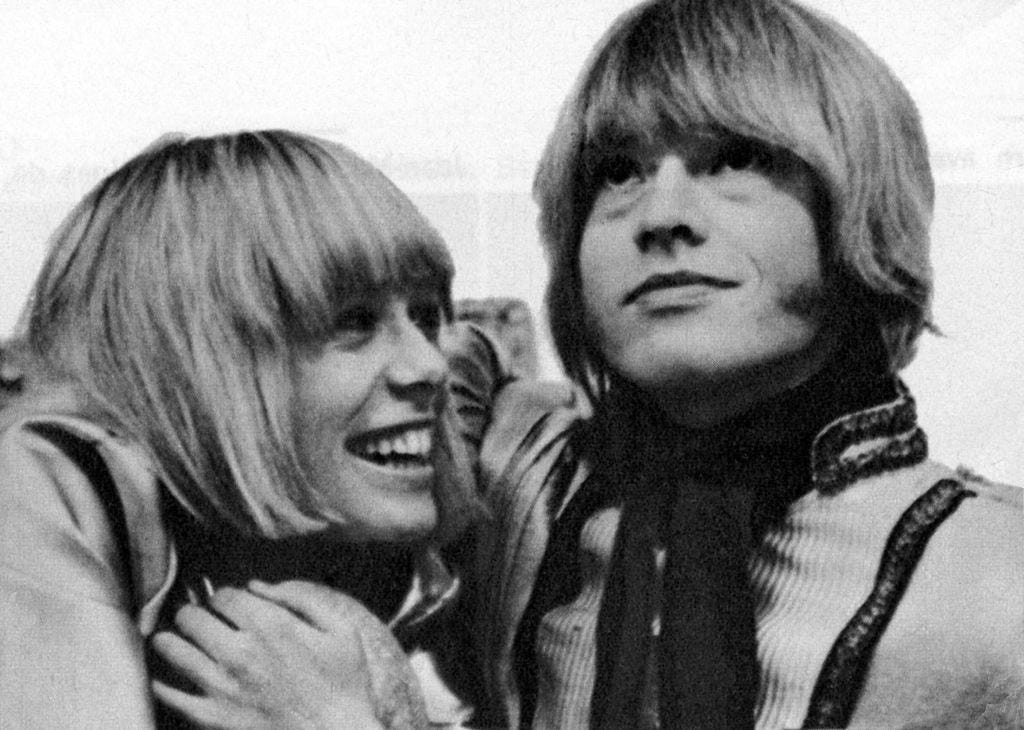
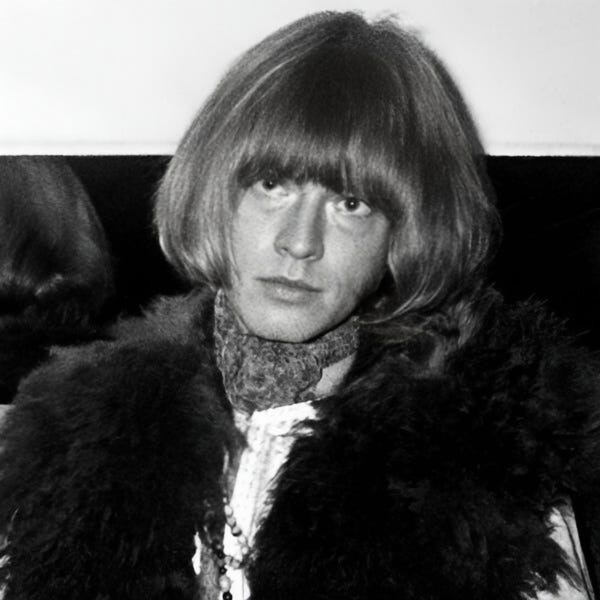
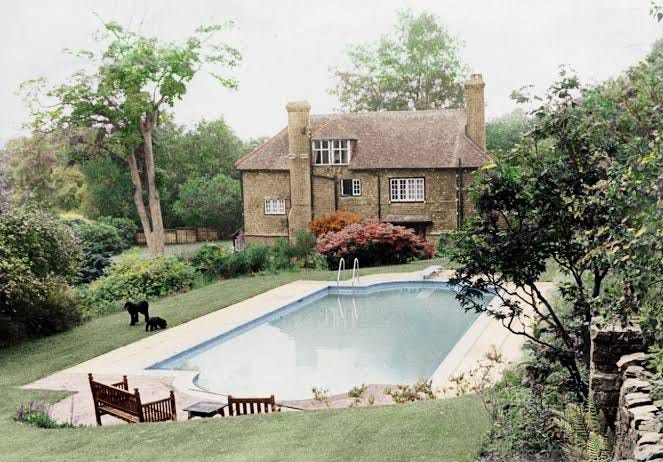

How badly must a person be beaten for them to be left blind in both eyes? Horrid stories in this piece!